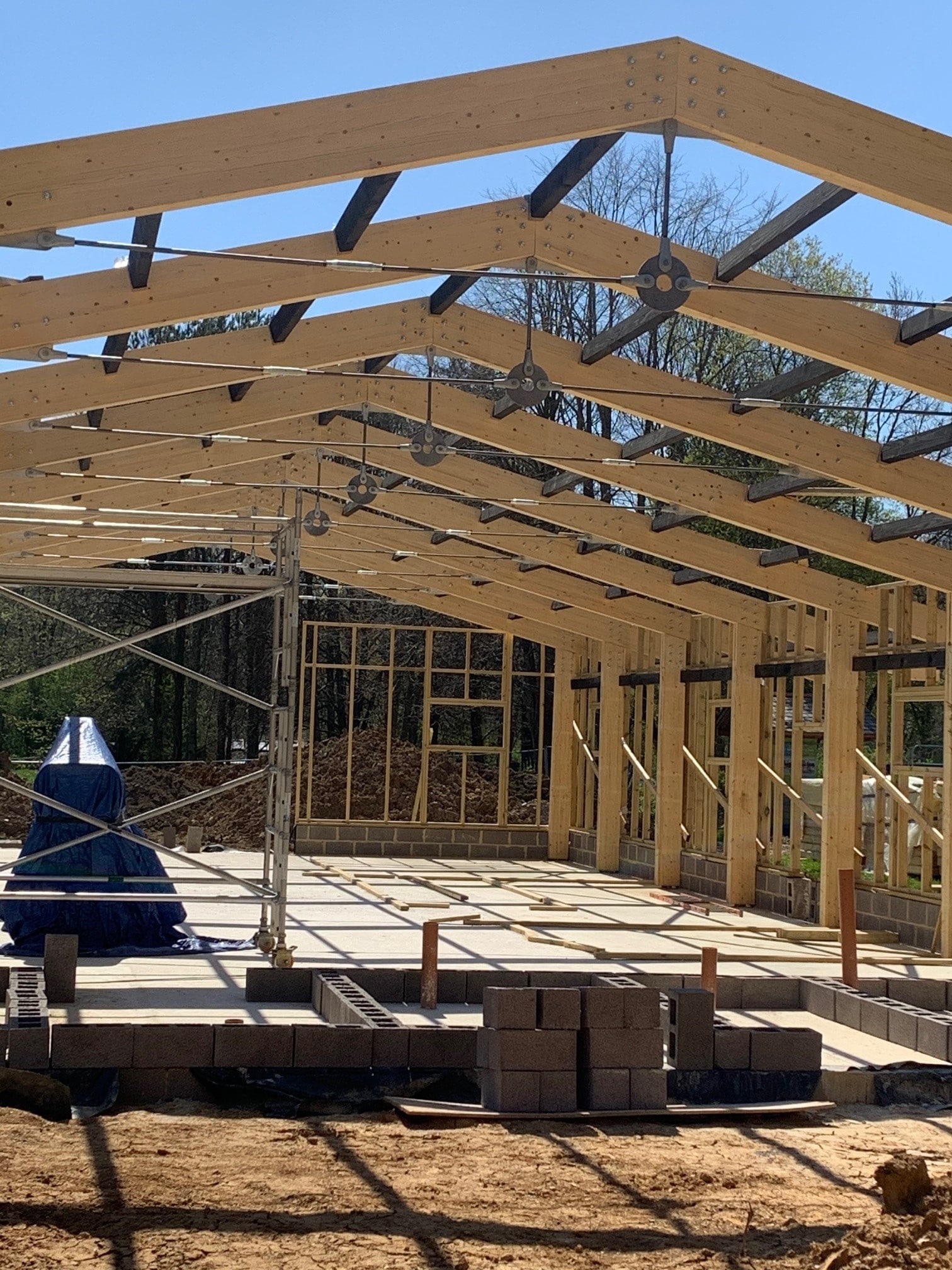In our latest addition to the Buildpass Guest Post Series, Andrew Carpenter – Chief Executive at the Structural Timber Association (STA) – looks at the recent focus on embodied carbon in the built environment and explains why a more positive approach to communication about different building materials is essential.
Reducing the embodied carbon of buildings gained increased attention in 2021. In particular, the United Nations Climate Change Conference (COP26) in Glasgow shone a spotlight on the issue of decarbonisation and what will be required to achieve Net Zero by 2050.
The construction industry has a key role to play in this. Globally, the built environment accounts for 39% of carbon emissions – 28% from the energy used to heat, cool and light buildings and 11% from embodied carbon. In fact, the Royal Institute of British Architects (RIBA) estimates that for a residential block, the embodied carbon up to practical completion accounts for as much as 51% of the whole life carbon emissions for the building.
Therefore, it is clear that the carbon footprint of the materials we use must be considered carefully. The publication of the Government’s ‘Net Zero Strategy: Build Back Greener’ document in October 2021 included commitments to help increase the use of low carbon materials, such as timber. The strategy also states an intention to improve carbon reporting and explore setting a maximum embodied carbon level for new builds in the future.
While we at the STA believe that timber is an excellent and versatile building material that has a significant role to play in the future of construction, the size of the challenge of decarbonisation means there is no one-size-fits-all solution. Building materials such as timber, concrete, steel and glass, each have their own particular attributes and benefits. There is also a whole industry dedicated to the development of new low and zero carbon materials that will play a part in the coming decades. This being the case, the optimum design and specification for a building should be a combination of products and materials that best meets the specific needs of the users, the site and the local environment. We firmly believe that the best way to achieve this is by ensuring decision makers have complete, fact-based and unbiased information to allow informed specification choices.
Sadly, this is not always the case and some organisations have gone to great lengths to discredit competitor products and materials. Sometimes this is through unfair comparisons, while at others it is plain and simple misinformation. It is always disappointing to see negative communications and marketing campaigns that attempt to mislead people about the attributes of a particular building technology in order to promote their own solution.
However, steps are being taken to establish a fairer, more transparent and more consistent approach to communicating product information. We believe this will go a long way in combating some of the less constructive tactics that have been employed. For example, the Construction Products Association (CPA) has established the Marketing Integrity Group (MIG) to address the issues raised in Dame Judith Hackitt’s 2018 report ‘Building A Safer Future’ and to tackle the challenges of obtaining clear and credible product information. The MIG has developed a new Code for Construction Product Information (CCPI) and sets five acid tests that information from product manufacturers must pass. Under the Code, information must be Clear, Accurate, Up-to-date, Accessible and Unambiguous.
This is something that the STA strongly supports as it reflects our own commitment to providing fact-based information to allow informed specification choices. Ultimately, it will be more productive and beneficial for groups within the industry to work together to find solutions to meet the challenges of the coming years.
To help provide specifiers with the information they need about all aspects of timber construction, we have produced a range of guides and resources covering everything from the latest research findings to building regulations and best practice principles. Our online library is a valuable resource for the growing number of public sector organisations investing in structural timber.
To find out how the STA can help visit www.structuraltimber.co.uk and to see more about the role timber can play in a low carbon future visit www.timefortimber.org.





















